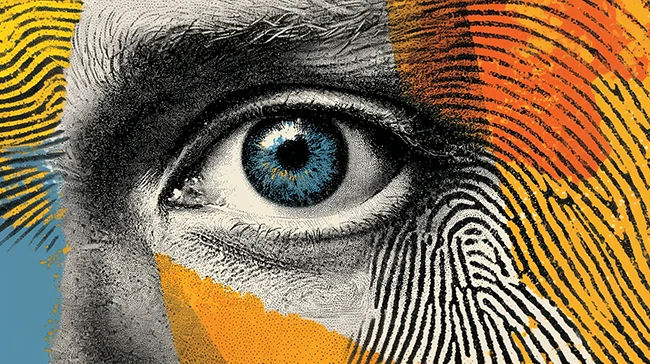Biometric spoofing isn’t as complex as it sounds
Biometric technologies were originally designed to improve security and streamline authentication, but they’re often misused in ways most people don’t notice. Like any system, biometrics has weaknesses that attackers can exploit.

Biometric spoofing isn’t as complex as it sounds. It’s basically when someone imitates your biometric traits to fool a system. This could be a printed photo, a 3D-printed fingerprint, or even a recorded voice. Basic facial recognition systems can be fooled with images from social media, and AI-generated voices can mimic people with surprising accuracy.
A new study has found that even your heartbeat could reveal your identity.
“Biometric data breaches raise concerns, as compromised physical identifiers cannot be reset like passwords and often need to be used in conjunction with additional authentication factors,” said Nuno Martins da Silveira Teodoro, VP of Group Cybersecurity at Solaris.
How biometric spoofing works
Criminals first gather biometric information using methods that range from covert surveillance to direct interaction with people. This can include fingerprints, facial features, or voice samples.
Using the collected data, fraudsters create counterfeit biometric traits. Fingerprints might be replicated with materials like silicone or gelatin, while facial or voice data can be manipulated with software tools.
With these fake traits, attackers try to trick the authentication system. They present the fabricated data as real, exploiting weaknesses in the system’s recognition algorithms.
If the spoofing works, criminals gain access to sensitive systems or information. This can lead to financial fraud, data theft, or identity impersonation.
The organizational risks of biometric data breaches
Unauthorized access to biometric data can have serious consequences for any organization. Such breaches can expose sensitive company or client information and lead to financial losses.
Stolen biometric data can be used to commit fraud or sold on the black market, and handling a breach can be expensive. Organizations that fail to protect biometric data may face lawsuits, regulatory penalties, or other legal challenges.
Deepfake attacks target biometric systems
The rise of AI has made spoofing attacks on authentication systems more sophisticated. It’s now easier for attackers to create realistic biometric identifiers, increasing both the scale and the risk of these attacks.
Research from iProov shows that only 0.1% of people can accurately detect AI-generated deepfakes.
Recently, security researchers uncovered a hacking tool that targets jailbroken iPhones, using deepfake videos to defraud banking apps through biometric identity theft. And this is not the first time iPhone users were targeted: the GoldPickaxe iOS Trojan, identified by Group-IB and linked to the Chinese-speaking group GoldFactory, was used to steal facial recognition data.
“AI technology continues to become more sophisticated, so organizations’ understanding of their systems’ vulnerabilities, awareness of these threats, and technology in place to combat them need to be taken extremely seriously,” noted Patrick Harding, Chief Architect at Ping Identity.
Global rules tighten around biometric security
As biometric systems become more common, new global regulations are emerging to strengthen security and protect personal data.
EU: The EU’s AI Act, adopted in May 2024, classifies biometric systems by risk. High-risk systems, such as remote biometric identification, must implement certified liveness detection and maintain attack-detection logs. The law restricts the use of real-time remote biometric identification in public spaces, except in specific law enforcement cases.
UK: The UK’s Data Protection and Digital Information Bill, expected to receive Royal Assent in late 2025, requires consent and Data Protection Impact Assessments for processing advanced biometric identifiers. The goal is to ensure individuals’ rights and protect personal data.
USA: Introduced in 2024, the proposed American Privacy Rights Act calls for revocable biometric templates and very low false acceptance rates for high-assurance systems. The legislation is still under review but points to a move toward standardized biometric protection.
International Standard (ISO/IEC 30107-3:2024): The 2024 revision adds testing for Presentation Attack Detection, including AI-generated spoof media and high-frame-rate masks. These updates aim to keep up with sophisticated spoofing methods.
Strategies for prevention
Security practices can be adjusted to reduce the risk of biometric data breaches. IT teams and cybersecurity professionals should focus on the following:
Facial liveness detection: Facial liveness detection, powered by technologies like 3D face mapping, is a major advancement in biometric security. Unlike older facial recognition systems that can be tricked by photos or videos, liveness detection ensures that actual person is present during authentication.
MFA: Using multiple verification factors is the best way to boost your security. With MFA, even if your fingerprint or facial data is stolen, an attacker would still need another form of verification to access your account.
Regular software updates: Keeping your biometric system’s software up to date helps make sure you have the latest security protections in place.
Employee education: Educating your employees on the risks of biometric hacking and how to avoid them can help protect your business. Explain to them how criminals operate and the most common methods they use to steal or misuse biometric data.
AI and ML: AI and ML can do things humans simply cannot. They can sift through huge amounts of data and spot biometric spoofing attempts. Adding AI and ML to your security setup helps your business stay ahead of cybercriminals. It is not only more accurate than humans at detecting these attacks, it is also much faster.